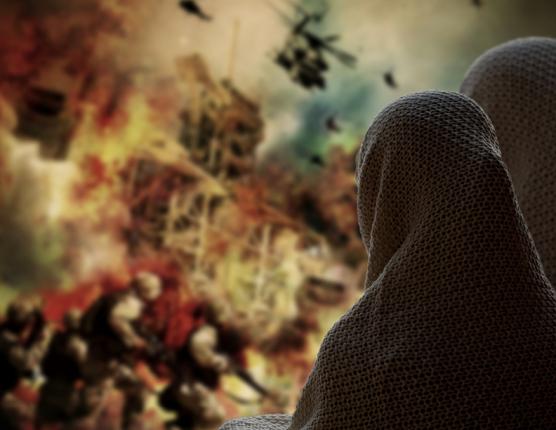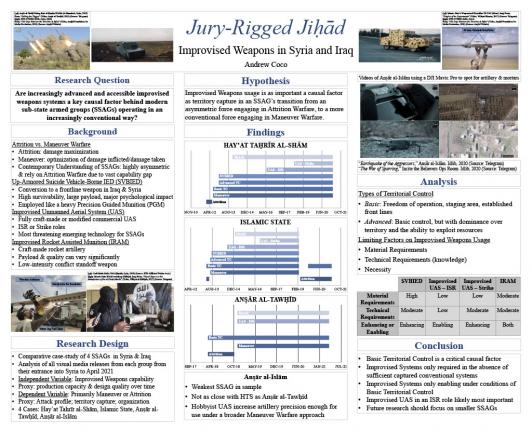Name
Andrew Coco
Class
INTA 4500
About This Project
On April 21, 2013, a video was uploaded to a Syrian opposition YouTube channel that showed fighters from the Free Syrian Army (FSA) affiliated Sarayā al-Ḥassan wal-Ḥussayn using a catapult to launch flaming projectiles at pro-Regime forces in the Southern Damascus suburb of Sīdī Miqdād. It garnered significant attention online, and it was becoming clear that catapults, and a menagerie of other improvised weapons, were playing a role in the fighting that deserved more attention.
As the war progressed, improvised weapons became increasingly capable, as did the groups that produced and employed them. What was once a nationwide insurgency comprised of highly asymmetric localized armed groups transitioned into a full-scale civil war comprised of more organized Sub-State Armed Groups (SSAGs) that held territory and operated like conventional military forces using Maneuver Warfare tactics. While a plethora of research has been conducted on these two phenomena independently, considerably less work has been done on the relationship between the two. Whether that relationship is correlative or causal, and how, has not been sufficiently determined, and is a question worth answering in order to understand the changing nature of SSAGs going forward. Therefore, the goal of this research is to determine whether or not increasingly advanced and accessible improvised weapons systems are a key causal factor behind modern SSAGs operating in an increasingly conventional way.



